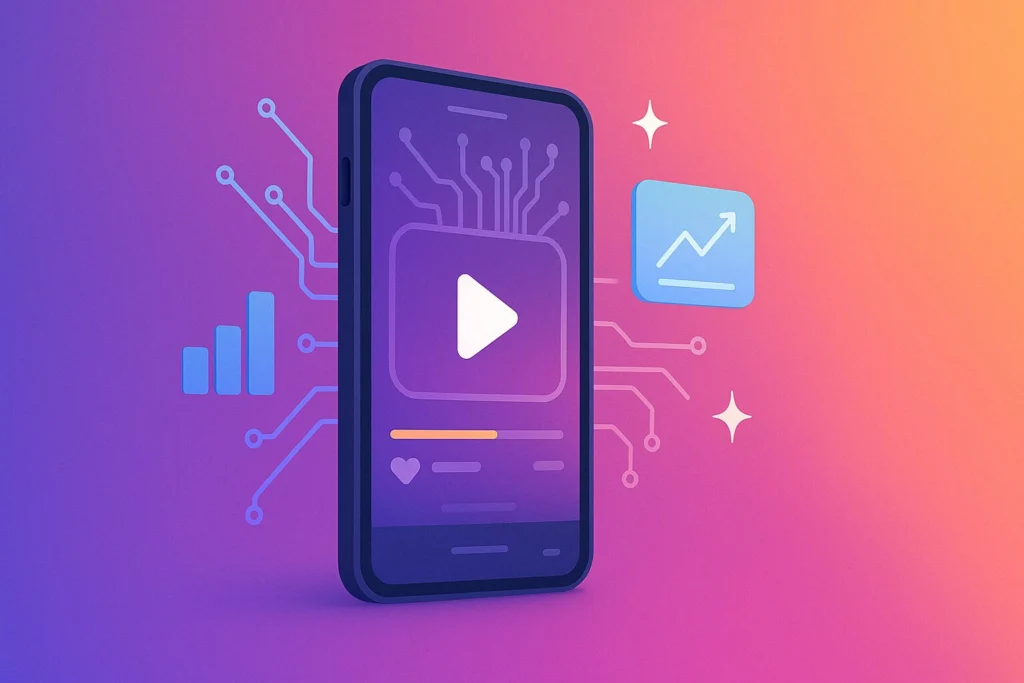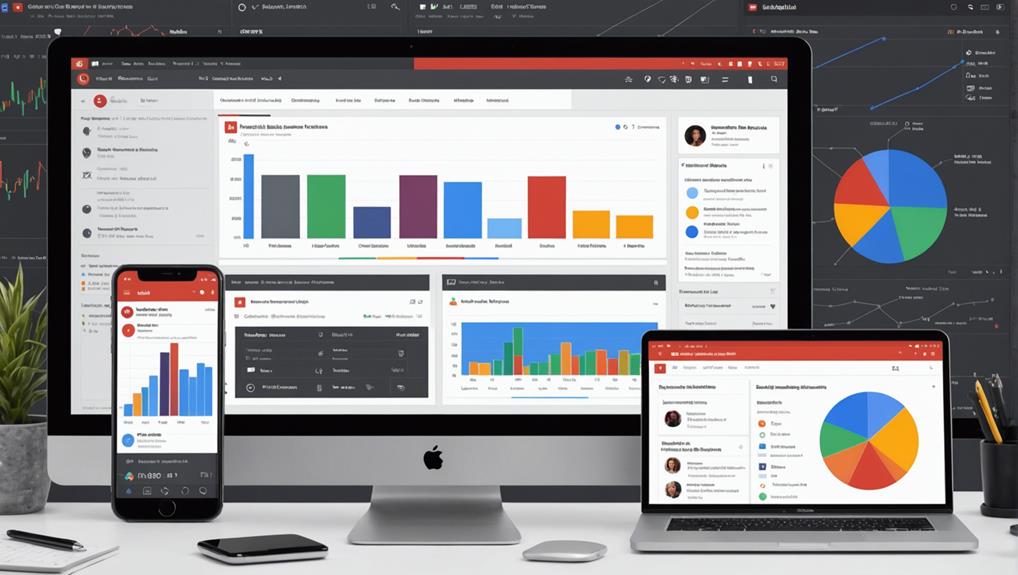For ideal engagement on YouTube, posting videos during peak times is crucial. Data suggests weekdays, particularly between 2 PM to 4 PM, and Fridays between 3 PM to 4 PM, greatly heighten viewer interaction. Weekend times from 9 AM to 11 AM are also effective. The YouTube algorithm favors early engagement, which bolsters video promotion and visibility. Consistent posting according to audience activity can foster sustained channel growth. Utilizing YouTube Analytics to identify when your audience is most active can refine your posting strategy. By aligning content with peak viewer times, creators can achieve improved engagement and broader reach.
Key Takeaways
- The best times to post on YouTube are weekdays between 2 PM and 4 PM for optimal engagement.
- Fridays between 3 PM and 4 PM significantly boost viewer interaction and engagement.
- Weekend posts are most effective between 9 AM and 11 AM for maximum visibility.
- Avoid posting between 1 AM and 6 AM as these times generally see lower audience activity.
- Using YouTube Analytics helps identify unique audience peak times for tailored posting schedules.
Importance of Posting Time
Understanding the importance of posting time is vital for maximizing engagement and views on YouTube. Research indicates that the best time to publish content can greatly influence a video’s performance. Typically, the ideal time to post is between 2 p.m. and 4 p.m. on weekdays and 9 a.m. to 11 a.m. on weekends. These time slots coincide with peak viewing times, enhancing the potential for early interaction.
Early engagement is essential as it signals YouTube to promote the video more widely.
Moreover, analyzing audience demographics through YouTube Analytics is important to tailor your posting schedule. Metrics such as “When your viewers are on YouTube” allow creators to pinpoint best times to post based on specific audience behavior and time zones. Remarkably, Fridays, especially between 3 p.m. and 4 p.m., are highlighted as particularly effective, aligning with users’ shift into the weekend.
Consistent posting at these best times fosters not only immediate visibility but also long-term channel growth. By aligning with engagement trends, creators can enhance audience retention and sustain a loyal viewership base, ultimately contributing to a channel’s ongoing success and growth.
YouTube Algorithm Insights
Understanding the YouTube algorithm’s focus on engagement metrics such as watch time, likes, and comments is essential for creators aiming to enhance their content’s visibility.
Personalized content exposure hinges on aligning videos with specific audience interests, ensuring that early engagement signals position them for broader reach.
Analyzing these patterns through YouTube Analytics allows creators to optimize their strategies, thereby maximizing potential audience interaction and growth.
Engagement Metrics Priority
While creating content that attracts high view counts is essential, the YouTube algorithm places greater emphasis on genuine engagement metrics like watch time and user interaction to determine video recommendations.
Understanding the intricacies of these metrics is essential for enhancing your content strategies. By analyzing audience behavior through YouTube Analytics, creators can identify ideal times to post, thereby enhancing early engagement and increasing viewership. This data-driven approach helps fine-tune content strategies to align with user interactions and preferences.
Key Insights:
- Engagement Metrics: Prioritizing watch time and user interactions over sheer views can greatly impact video recommendations. These metrics signal to the algorithm that your content is engaging and valuable.
- Ideal Times: Posting content at times when your audience is most active can boost visibility and initial engagement, creating a favorable snowball effect. YouTube Analytics provides insights into when your viewers are online, guiding ideal scheduling.
- Early Engagement: Capturing viewer interest in the initial days of posting is essential. Prompt engagement signals the algorithm to promote the content more broadly, increasing its reach and potential for virality.
Personalized Content Exposure
The YouTube algorithm increasingly favors personalized content recommendations, tailoring video suggestions based on individual user behaviors and preferences. This shift means that understanding the best time to post is vital for maximizing exposure through the algorithm.
By analyzing engagement metrics such as watch time, likes, and comments, creators can identify ideal times that align with their audience activity. This early engagement is essential, as it signals to the algorithm that the content is valuable, potentially leading to broader promotion and increased visibility.
Utilizing YouTube Analytics, creators gain insights into their audience’s unique engagement patterns, enabling them to refine their content strategy and posting schedules effectively. Regularly monitoring these analytics helps in adjusting strategies to cater to specific audience behaviors, ensuring that personalized content captures viewer interest.
Testing various posting times and content types is fundamental to discover what resonates best with the target audience, thereby enhancing exposure through the algorithm.
Watch Time Significance
In the domain of digital content creation, watch time stands as a vital metric within the YouTube ecosystem, greatly impacting the algorithm’s content recommendation decisions. The YouTube algorithm prioritizes videos with higher watch time, making it essential for creators to strategically select posting times that align with when their audience is most active. This approach maximizes initial views and engagement, fundamental elements for enhancing a video’s visibility and potential for viral growth.
Key factors to take into account include:
- Engagement Metrics: Watch time, alongside likes and comments, considerably influences YouTube’s algorithm. Higher engagement can lead to broader audience recommendations, amplifying content reach.
- Snowball Effect: Videos that garner substantial watch time shortly after posting are more likely to experience a snowball effect, increasing visibility and engagement over subsequent days.
- Optimal Posting Times: Consistent tracking of watch time data enables creators to identify peak hours tailored to their audience’s habits. Posting during these times can enhance the probability of a video being featured in YouTube’s recommendations.
Optimal Days and Times
For content creators seeking maximum engagement on YouTube, selecting the ideal days and times for posting is crucial. Data indicates that the best days to post are Friday, Thursday, and Wednesday, with Friday emerging as the prime day. Posting between 12 p.m. and 3 p.m. on Fridays aligns with peak viewing time, driving higher engagement.
During weekdays, focusing on posting times between 2 p.m. and 4 p.m. can greatly enhance visibility and interaction.
YouTube Shorts, a rapidly growing content format, also benefit from precise timing. Peak times for Shorts include Friday between 3 p.m. and 4 p.m., and Tuesday at 2 p.m., targeting audiences when they are most active.
Although weekends are generally less favorable, posting between 9 a.m. and 11 a.m. can yield the highest views. Conversely, Sundays register lower engagement, making them less effective for content releases.
To maximize reach, creators should avoid the least effective times, particularly early mornings and late nights from 1 a.m. to 6 a.m. on both weekdays and weekends.
Adhering to these strategic posting times guarantees that content reaches the widest audience, enhancing engagement and viewership.
Using YouTube Analytics
Maximizing engagement on YouTube extends beyond choosing the right posting times; it involves leveraging the wealth of data available through YouTube Analytics. This tool is invaluable for identifying peak engagement times and tailoring strategies to suit the preferences of your target audience. By utilizing the “When your viewers are on YouTube” report, creators can ascertain when their audience is most active, providing a data-driven foundation for posting strategies.
- Audience Tab Insights: The audience tab offers significant information about viewer demographics, such as age, location, and preferences. This data allows creators to customize content and schedule uploads during peak hours, guaranteeing alignment with their target audience’s availability.
- Real-Time Analytics: For channels without extensive historical data, the real-time analytics section is vital. It provides immediate engagement patterns, enabling creators to adjust posting strategies on the fly and maximize viewer interaction.
- Performance Metrics: Past performance metrics, including views and watch time during specific posting times, are essential for refining content strategies. By analyzing these metrics, creators can better understand which content types resonate most and when to post for enhanced engagement.
Incorporating these analytics-driven insights guarantees that content reaches the right audience at the best time.
Audience Engagement Strategies
To maximize audience engagement, creators should consider posting videos between 2 PM and 4 PM on Fridays, coinciding with the start of weekend leisure time.
Utilizing tools such as “When Your Viewers Are on YouTube” and YouTube Analytics can help optimize content release schedules by identifying peak activity periods for specific audience segments.
Additionally, fostering a vibrant viewer community through consistent interaction in comments and community posts can greatly enhance loyalty and contribute to sustainable channel growth.
Timing for Maximum Impact
While understanding audience behavior is vital, strategically timing your YouTube posts can greatly enhance engagement and visibility. The best times to post for achieving peak engagement on YouTube are critically influenced by viewer data. According to YouTube Analytics, late afternoons during weekdays, specifically between 2 p.m. and 4 p.m., represent an ideal time frame for uploading content.
On weekends, the window shifts earlier, with 9 a.m. to 11 a.m. being particularly effective.
- Fridays for Maximum Impact: Posting on Fridays between 3 p.m. and 4 p.m. can considerably boost viewer interaction and is considered the most effective time for reaching a wider audience.
- Leveraging Early Engagement: YouTube’s algorithm prioritizes videos that garner early engagement. Content that performs well within the first 48 hours often experiences increased visibility and reach.
- Customized Posting Schedule: By utilizing YouTube Analytics to assess when your audience is most active, you can tailor your posting schedule accordingly to foster consistent channel growth.
Adapting your strategy based on these engagement metrics can enhance your content’s reach. Consistently posting during identified peak times not only improves visibility but also supports steady growth in your channel’s viewership.
Building Viewer Community
Effectively building a viewer community on YouTube involves leveraging a range of audience engagement strategies that are both data-driven and focused on fostering meaningful connections.
An essential aspect of this is developing a consistent posting schedule, typically 2-3 times per week, which helps establish predictable patterns for subscribers, consequently reinforcing viewing habits and promoting community growth. Aligning this schedule with ideal posting times guarantees maximum audience interaction and engagement.
Engaging with viewers through thoughtful responses to comments and facilitating discussions not only strengthens community bonds but also enhances viewer loyalty and return viewership.
Utilizing YouTube’s community tab to share polls, updates, and behind-the-scenes content is another powerful tool for audience interaction, keeping subscribers informed and actively engaged.
Real-time engagement through live Q&A sessions or interactive streams provides an avenue for creators to directly connect with their audience, addressing questions and gathering viewer feedback instantaneously.
Encouraging viewer feedback and suggestions for future content makes the audience feel valued and offers creators insights into what content resonates most effectively, thereby tailoring future offerings.
These strategies collectively fortify community ties and contribute greatly to sustained channel growth and viewer retention.
Video Production Tips
Achieving ideal viewer engagement on YouTube hinges considerably on high-quality video production. Well-crafted video content not only captivates audiences but also boosts audience retention and encourages interaction. The foundation of this success lies in consistent video production practices. By adhering to a regular posting schedule and experimenting with diverse content formats, creators can foster improved channel growth.
Additionally, employing SEO techniques and creating engaging thumbnails can enhance video visibility and attract a broader viewer base.
To maximize the impact of your video content, consider the following strategies:
- Collaborate with Skilled Creators: Partnering with talented individuals who share your vision can raise the quality and appeal of your videos, leading to more views and subscriptions.
- Optimize Video Elements: Engaging thumbnails and detailed descriptions are critical for drawing attention and improving visibility. Implementing effective SEO techniques further guarantees that your content reaches its intended audience.
- Leverage Production Tools: Utilize platforms and tools designed to streamline video production. These resources enable creators to efficiently produce content at scale without compromising quality.
Frequently Asked Questions
What Is the Best Time and Day to Post on Youtube?
Ideal posting times for maximizing audience engagement, based on analytics insights, include weekdays from 2 p.m. to 4 p.m. and weekends from 9 a.m. to 11 a.m. Understanding viewer demographics and niche audiences is essential for content scheduling and global reach.
Which Time Is Best for Youtube Video Upload?
Ideal YouTube video upload times hinge on understanding upload frequency, audience engagement, and niche relevance. Utilize analytics tools for competitive analysis and to identify peak hours, viewer habits, and specific time zones to enhance content strategy and video promotion.
How to Increase Views on Youtube?
To increase YouTube views, implement engagement strategies including optimized thumbnail design and video length. Focus on audience targeting, content planning, SEO optimization, and social sharing. Conduct thorough keyword research, analytics tracking, and niche selection to refine your approach.
What Is the Best Time to Start Youtube?
Initiating a YouTube channel involves strategic planning for YouTube growth. Focus on content strategy, audience engagement, and video optimization. Leverage niche targeting, analytics tools, community building, brand collaboration, marketing techniques, and monetization strategies to maximize potential.
Conclusion
Determining the ideal time to post on YouTube is essential for maximizing audience engagement and leveraging the platform’s algorithm. Analysis of audience behavior and YouTube Analytics data suggests that certain days and times yield higher viewership. Implementing strategic posting schedules, informed by these insights, enhances visibility and interaction. Additionally, integrating audience engagement strategies and refining video production techniques can further enhance content performance. An evidence-based approach guarantees content reaches the intended audience effectively, fostering sustained growth and engagement.




